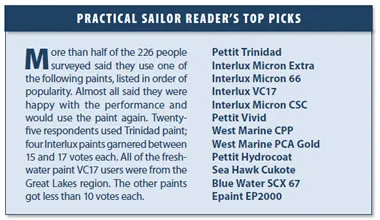- Joined
- Sep 21, 2013
- Messages
- 26
- Reaction score
- 0
- Points
- 1
What is the best Bottom Paint for the Grady's inside Long Island Sound? Any recommendations? Thanks.

 www.practical-sailor.com
www.practical-sailor.com
Well, this is timely. I just came here to ask about the very same thing. And I'm on LI Sound, where are you Grady White Guy?
I finally got my 2004 180 Sportsman registered and since I won't be going out for work much (CV) I have am going to have plenty of time to get it ready.
The previous owner had it on a trailer so I'll be painting the bottom for the first time. I used Hydrocoat on my last boat, went on very easy, but took a while to smooth out in the water.
I was thinking I'll do 2 PROTECT barrier coats and then 2 HYDROCOAT.
Will be calling Jamestown for some advice but about how much Hydrocoat will I need for 2 coats on a 180 Sportsman? Coverage is suppose to be 500sq.ft/gallon so am I right 1 gallon should do 2 coats?
I was referring to recoat times during the initial painting.When you say "Also you need to follow the guidelines for recoats. If you wait too long, scuffing or light sanding is needed before applying the next coat . If you don't the paint may not adhere correctly" do you mean waiting a couple of seasons to recoat or putting a second coat on top of the first when initially using Hydrocoat?

